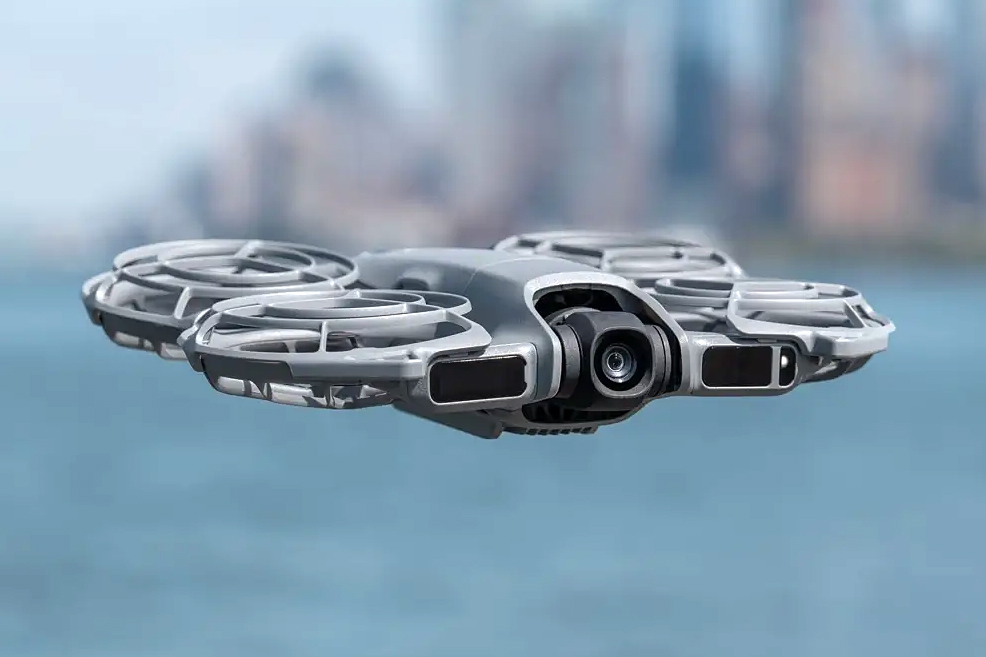
DJI has announced a follow-up to the Neo selfie drone it launched last September for $199. Although the original was priced for mass adoption, it lacked several useful features that the new DJI Neo 2 is adding, including gesture controls and the ability to actively avoid obstacles instead of just relying on a design that can survive impacts and crashes.
The DJI Neo 2 is slightly larger than its predecessor, and at 151 grams, it’s 16 grams heavier, but that extra weight is a small tradeoff given the added functionality and a larger battery. The Neo 2’s new obstacle avoidance system uses forward-looking LIDAR and downward-looking infrared sensors to detect and avoid hazards while the drone follows you in forward and sideways flight modes. It still features integrated guards that fully protect its four propellers, but you won’t have to be as careful about where you choose to fly it.

The drone’s maximum following speed has been increased to 12m/s, or nearly 27mph, which is much faster than the original Neo’s top follow speed, even after a firmware update last November bumped it up to around 18mph. The Neo 2 is also better at flying in less than ideal conditions. In our testing, the original Neo could be difficult to control in a breeze and had a tendency to drift, but DJI says the Neo 2 can maintain a stable hover in winds close to 24mph.
The Neo 2 is primarily designed to capture compelling drone footage autonomously, but in addition to carrying forward support for DJI’s RC-N3 and motion controllers, and its Goggles N3 headset, the company is adding gesture controls. You can adjust the position and distance of the drone by moving your hands around while it’s in flight and hovering nearby, and DJI has added a small screen to indicate what mode it’s in. On the original Neo, those were presented using a series of illustrations and LED lights atop the drone.

A larger 1,606mAh rechargeable battery increases the Neo 2’s flight times to up to 19 minutes, and it comes with 49GB of storage on board – up from 22GB. The drone’s camera now uses a dual-axis gimbal for improved stability, and while it has the same half-inch sensor as the original, it now offers a wider field of view and can capture 4K footage at up to 60fps, or up to 100fps while the Neo 2 is being piloted manually.
The upgrades make the Neo 2 an even more compelling and cheaper alternative to HoverAir’s offerings, including its entry-level X1, but as with DJI’s recently announced Osmo Mobile 8 smartphone gimbal, the company’s latest drone is exclusively being launched in China. Pricing starts at 1,499 Chinese Yuan, or around $211, which is an increase of around $28. DJI is also offering the Neo 2 in a bundle that adds extra batteries and a multi-charger for 1,499 Chinese Yuan ($282) and is bundling the drone with its motion control joystick and Goggles N3 for 3,699 Chinese Yuan ($521).
